- Manuals
- Brands
- Yamaha Manuals
- Motorcycle
- 2007 Virago XV250W
- Owner’s manual
-
Contents
-
Table of Contents
-
Troubleshooting
-
Bookmarks
Quick Links
OWNER’S MANUAL
XV250W
2UJ-28199-24
Related Manuals for Yamaha 2007 Virago XV250W
Summary of Contents for Yamaha 2007 Virago XV250W
-
Page 1
OWNER’S MANUAL XV250W 2UJ-28199-24… -
Page 3
Welcome to the Yamaha world of motorcycling! As the owner of the XV250W, you are benefiting from Yamaha’s vast experience and newest technology regarding the de- sign and manufacture of high-quality products, which have earned Yamaha a reputation for dependability. -
Page 4: Important Manual Information
This manual should be considered a permanent part of this motorcycle and should remain with it even if the motorcycle is subsequently sold. Yamaha continually seeks advancements in product design and quality. Therefore, while this manual contains the most current product information available at the time of printing, there may be minor discrepancies between your motorcycle and this manual.
-
Page 5
IMPORTANT MANUAL INFORMATION EAU10200 XV250W OWNER’S MANUAL ©2006 by Yamaha Motor Co., Ltd. 1st edition, May 2006 All rights reserved. Any reprinting or unauthorized use without the written permission of Yamaha Motor Co., Ltd. is expressly prohibited. Printed in Japan. -
Page 6: Table Of Contents
TABLE OF CONTENTS SAFETY INFORMATION ….1-1 PRE-OPERATION CHECKS ….. 4-1 Spoke wheels ……6-14 Location of important labels ….1-5 Pre-operation check list ….4-2 Adjusting the clutch lever free play ……..6-14 DESCRIPTION ……..2-1 OPERATION AND IMPORTANT Adjusting the brake lever Left view ……….2-1 RIDING POINTS………
-
Page 7
TABLE OF CONTENTS Checking the wheel bearings ..6-26 Battery ……….6-26 Replacing the fuses ……6-28 Replacing the headlight bulb ..6-28 Replacing the tail/brake light bulb ………..6-30 Replacing a turn signal light bulb ………..6-30 Supporting the motorcycle ….6-31 Front wheel ……..6-32 Rear wheel ……..6-33 Troubleshooting ……6-35 Troubleshooting chart ….6-36 MOTORCYCLE CARE AND… -
Page 8: Safety Information
SAFETY INFORMATION EAU10251 AND/OR WHEN MADE NECES- • Ride where other motorists can SARY BY MECHANICAL CONDI- see you. Avoid riding in another MOTORCYCLES SINGLE TIONS. motorist’s blind spot. TRACK VEHICLES. THEIR SAFE USE Many motorcycle accidents in- AND OPERATION ARE DEPENDENT Safe riding volve inexperienced operators.
-
Page 9
Modifications made to this motorcycle other motorists can see you. the single most critical factor in the pre- not approved by Yamaha, or the re- The posture of the operator and vention or reduction of head injuries. moval of original equipment, may ren- passenger is important for proper Always wear an approved helmet. -
Page 10
Maximum load: been specifically designed for use on create instability due to improper 196 kg (432 lb) this motorcycle. Since Yamaha cannot weight distribution or aerody- test all other accessories that may be namic changes. If accessories When loading within this weight limit,… -
Page 11
SAFETY INFORMATION tor and may limit control ability, Always turn the engine off before eyes, see your doctor immediately. therefore, such accessories are leaving the motorcycle unattended If any gasoline spills on your skin not recommended. and remove the key from the main or clothing, immediately wash the Use caution when adding electri- switch. -
Page 12: Location Of Important Labels
SAFETY INFORMATION EAU10381 Location of important labels Please read the following important labels carefully before operating this vehicle.
-
Page 13
SAFETY INFORMATION Before you operate this vehicle, read the owner’s manual. Cold tire normal pressure should be set Prima di usare il veicolo, as follows. leggete il manuale di istruzioni. Lire le manuel du propriétaire avant d’utiliser ce véhicule. 1.75 Lesen Sie die Bedienungsanleitung 2.00 bevor Sie dieses Fahrzeug fahren. -
Page 14: Description
DESCRIPTION EAU10410 Left view 1. Headlight (page 6-28) 9. Fuel cock (page 3-6) 2. Steering lock (page 3-8) 10.Shift pedal (page 3-4) 3. Fuel tank (page 3-5) 4. Battery (page 6-26) 5. Fuses (page 6-28) 6. Helmet holder (page 3-9) 7.
-
Page 15: Right View
DESCRIPTION EAU10420 Right view 1. Tail/brake light (page 6-30) 9. Shock absorber assembly spring preload adjusting ring (page 3-9) 2. Rear turn signal lights (page 6-30) 3. Rider seat (page 3-8) 4. Air filter element (page 6-9) 5. Front turn signal light (page 6-30) 6.
-
Page 16: Controls And Instruments
DESCRIPTION EAU10430 Controls and instruments 1. Clutch lever (page 3-3) 2. Left handlebar switches (page 3-2) 3. Speedometer unit (page 3-2) 4. Indicator lights (page 3-1) 5. Right handlebar switches (page 3-2) 6. Brake lever (page 3-4) 7. Throttle grip (page 6-12) 8.
-
Page 17: Instrument And Control Functions
INSTRUMENT AND CONTROL FUNCTIONS EAU10450 EAU10980 EAU11090 Main switch Indicator lights High beam indicator light “HIGH BEAM” This indicator light comes on when the high beam of the headlight is switched 1. High beam indicator light “HIGH BEAM” The main switch controls the ignition 2.
-
Page 18: Speedometer Unit
INSTRUMENT AND CONTROL FUNCTIONS EAU11630 EAU12346 Right Speedometer unit Handlebar switches Left 1. Engine stop switch “ENGINE STOP” 2. Hazard switch “HAZARD” 1. Odometer 3. Start switch “START” 2. Tripmeter 1. Pass switch “PASS” 3. Tripmeter reset knob 2. Dimmer switch “LIGHTS” 4.
-
Page 19: Clutch Lever
INSTRUMENT AND CONTROL FUNCTIONS ter position. To cancel the turn signal EAU12752 EAU12820 Hazard switch “HAZARD” Clutch lever lights, push the switch in after it has re- With the key in the “ON” position, use turned to the center position. this switch to turn on the hazard lights (simultaneous flashing of all turn signal EAU12510…
-
Page 20: Shift Pedal
INSTRUMENT AND CONTROL FUNCTIONS EAU12870 EAU12890 EAU12941 Shift pedal Brake lever Brake pedal 1. Shift pedal 1. Brake lever 1. Brake pedal The shift pedal is located on the left The brake lever is located at the right The brake pedal is on the right side of side of the engine and is used in com- handlebar grip.
-
Page 21: Fuel Tank Cap
INSTRUMENT AND CONTROL FUNCTIONS EAU13040 EAU13211 Fuel tank cap NOTE: Fuel The fuel tank cap cannot be closed un- less the key is in the lock. In addition, the key cannot be removed if the cap is not properly closed and locked. EWA11090 WARNING Make sure that the fuel tank cap is…
-
Page 22: Fuel Cock
With the fuel cock lever in this position, as well as to the exhaust system. fuel flows to the carburetor when the Your Yamaha engine has been de- engine is running. Turn the fuel cock le- signed to use regular unleaded gaso-…
-
Page 23: Starter (Choke) Lever
INSTRUMENT AND CONTROL FUNCTIONS EAU13630 Starter (choke) lever 1. Arrow mark positioned over “RES” 1. Arrow mark positioned over “PRI” 1. Starter (choke) lever This indicates reserve. With the fuel This indicates prime. With the fuel cock Starting a cold engine requires a richer cock lever in this position, the fuel re- lever in this position, the engine can be air-fuel mixture, which is supplied by…
-
Page 24: Steering Lock
INSTRUMENT AND CONTROL FUNCTIONS EAU13730 To unlock the steering EAU14220 Steering lock Rider seat 1. Open the steering lock cover, and then insert the key. To remove the rider seat 2. Push the key in, turn it 1/8 turn Remove the bolts, and then pull the rid- counterclockwise so that it moves er seat off.
-
Page 25: Helmet Holder
INSTRUMENT AND CONTROL FUNCTIONS EAU14281 EAU14880 Helmet holder Adjusting the shock absorber assemblies 1. Projection 2. Seat holder 1. Helmet holder 2. Place the rider seat in the original 2. Unlock. 1. Spring preload adjusting ring position, and then tighten the bolts. 2.
-
Page 26: Sidestand
INSTRUMENT AND CONTROL FUNCTIONS EWA10210 EAU15301 below and have a Yamaha dealer re- Sidestand WARNING pair it if it does not function proper- The sidestand is located on the left side Always adjust both shock absorber of the frame. Raise the sidestand or…
-
Page 27: Ignition Circuit Cut-Off System
Periodically check the operation of the ignition circuit cut-off system according to the following procedure. EWA10250 WARNING If a malfunction is noted, have a Yamaha dealer check the system be- fore riding. 3-11…
-
Page 28
5. Push the start switch. Does the engine start? The neutral switch may be defective. The motorcycle should not be ridden until checked by a Yamaha dealer. With the engine still running: 6. Move the sidestand up. 7. Keep the clutch lever pulled. -
Page 29: Pre-Operation Checks
PRE-OPERATION CHECKS EAU15591 The condition of a vehicle is the owner’s responsibility. Vital components can start to deteriorate quickly and unexpectedly, even if the vehicle remains unused (for example, as a result of exposure to the elements). Any damage, fluid leakage or loss of tire air pressure could have serious consequences.
-
Page 30: Pre-Operation Check List
• Make sure that operation is smooth. • Check cable free play. Throttle grip 6-12, 6-23 • If necessary, have Yamaha dealer adjust cable free play and lubricate cable and grip housing. • Make sure that operation is smooth. Control cables 6-22 •…
-
Page 31
• Correct if necessary. • Check operation of ignition circuit cut-off system. Sidestand switch 3-10 • If system is defective, have Yamaha dealer check vehicle. • Check fluid level. Battery 6-26 • Fill with distilled water if necessary. -
Page 32: Operation And Important Riding Points
Become thoroughly familiar system to enable starting, one of the Yamaha dealer check the electrical cir- with all operating controls and following conditions must be met: cuit. their functions before riding. The transmission is in the neutral Consult a Yamaha dealer re- position.
-
Page 33: Starting A Warm Engine
OPERATION AND IMPORTANT RIDING POINTS ECA11130 EAU16640 EAU16671 Starting a warm engine Shifting CAUTION: Follow the same procedure as for start- For maximum engine life, always ing a cold engine with the exception warm the engine up before starting that the starter (choke) is not required off.
-
Page 34: Tips For Reducing Fuel Consumption
OPERATION AND IMPORTANT RIDING POINTS ECA10260 EAU16800 EAU16841 Tips for reducing fuel con- Engine break-in CAUTION: sumption There is never a more important period Even with the transmission in in the life of your engine than the period Fuel consumption depends largely on the neutral position, do not between 0 and 1600 km (1000 mi).
-
Page 35: Parking
CAUTION: touch them. If any engine trouble should occur Do not park on a slope or on soft during the engine break-in period, ground, otherwise the vehicle immediately have a Yamaha dealer may overturn. check the vehicle.
-
Page 36: Periodic Maintenance And Minor Repair
If you are not familiar with mainte- certain maintenance work correctly. nance work, have a Yamaha dealer do it for you. NOTE: If you do not have the tools or experi- ence required for a particular job, have a Yamaha dealer perform it for you.
-
Page 37: Periodic Maintenance And Lubrication Chart
The annual checks must be performed every year, except if a kilometer-based maintenance is performed in- stead. From 50000 km, repeat the maintenance intervals starting from 10000 km. Items marked with an asterisk should be performed by a Yamaha dealer as they require special tools, data and technical skills. ODOMETER READING (× 1000 km)
-
Page 38
PERIODIC MAINTENANCE AND MINOR REPAIR ODOMETER READING (× 1000 km) ANNUAL ITEM CHECK OR MAINTENANCE JOB CHECK √ √ √ √ √ • Check for cracks or damage. 9 * Brake hose • Replace. Every 4 years • Check runout, spoke tightness and for damage. √… -
Page 39
PERIODIC MAINTENANCE AND MINOR REPAIR ODOMETER READING (× 1000 km) ANNUAL ITEM CHECK OR MAINTENANCE JOB CHECK • Change. √ √ √ √ √ √ Engine oil • Check oil level and vehicle for oil leakage. √ √ √ Engine oil filter element • Replace. Front and rear brake √… -
Page 40: Removing And Installing The Panel
PERIODIC MAINTENANCE AND MINOR REPAIR EAU18751 EAU19544 Removing and installing the Checking the spark plugs panel The spark plugs are important engine components, which are easy to check. The panel shown needs to be removed Since heat and deposits will cause any to perform some of the maintenance spark plug to slowly erode, the spark jobs described in this chapter.
-
Page 41
If any spark plug shows a distinctly dif- ferent color, the engine could be oper- ating improperly. Do not attempt to 1. Spark plug gap diagnose such problems yourself. In- stead, have a Yamaha dealer check Spark plug gap: the vehicle. 0.6–0.7 mm (0.024–0.028 in) -
Page 42: Engine Oil And Oil Filter Element
PERIODIC MAINTENANCE AND MINOR REPAIR EAU19751 2. Place an oil pan under the engine Engine oil and oil filter ele- NOTE: to collect the used oil. The engine oil should be between the ment 3. Remove the engine oil filler cap minimum and maximum level marks.
-
Page 43
PERIODIC MAINTENANCE AND MINOR REPAIR Tightening torque: NOTE: Engine oil drain bolt: Skip steps 4–6 if the oil filter element is 34 Nm (3.4 m·kgf, 24 ft·lbf) not being replaced. 8. Add the specified amount of the 4. Remove the oil filter element cover recommended engine oil, and then by removing the bolts. -
Page 44: Cleaning The Air Filter Element
PERIODIC MAINTENANCE AND MINOR REPAIR Make sure that no foreign mate- EAU32733 Cleaning the air filter element rial enters the crankcase. The air filter element should be cleaned 9. Start the engine, and then let it idle at the intervals specified in the periodic for several minutes while checking maintenance and lubrication chart.
-
Page 45
The air filter element should be wet but the clamp screw. not dripping. 12. Install the air filter case bolts. 1. Wing nut Recommended oil: 2. Air filter element Yamaha foam air filter oil or other quality foam air filter oil 6-10… -
Page 46: Adjusting The Carburetor
Therefore, most car- checked and, if necessary, adjusted as buretor adjustments should be left to a follows at the intervals specified in the Yamaha dealer, who has the neces- periodic maintenance and lubrication sary professional knowledge and expe- chart.
-
Page 47: Checking The Throttle Cable Free Play
Yamaha dealer at the intervals specified in the periodic Tire air pressure maintenance and lubrication chart. The tire air pressure should be checked and, if necessary, adjusted before each ride.
-
Page 48
LOAD YOUR VEHICLE. Make sure in it, or if the sidewall is cracked, con- Tire air pressure (measured on cold that the total weight of the cargo, rid- tact a Yamaha dealer immediately and tires): er, passenger, and accessories have the tire replaced. -
Page 49: Spoke Wheels
WARNING age before each ride. If any dam- The front and rear tires should age is found, have a Yamaha be of the same make and de- dealer replace the wheel. Do not sign, otherwise the handling attempt even the smallest repair to 1.
-
Page 50: Adjusting The Brake Lever Free Play
PERIODIC MAINTENANCE AND MINOR REPAIR 5. To increase the clutch lever free EAU22092 NOTE: Adjusting the brake lever free play, turn the adjusting nut in direc- If the specified clutch lever free play play tion (a). To decrease the clutch le- could be obtained as described above, ver free play, turn the adjusting nut tighten the locknut and skip the rest of…
-
Page 51: Adjusting The Brake Pedal Position And Free Play
1. Locknut EWA10670 trol and an accident. WARNING 2. Brake pedal position adjusting bolt It is advisable to have a Yamaha 3. Tighten the locknut. dealer make these adjustments. EWA11230 WARNING After adjusting the brake pedal posi-…
-
Page 52: Adjusting The Rear Brake Light Switch
The brake pedal free play should mea- obtained as described, have a switch sure 20.0–30.0 mm (0.79–1.18 in) at Yamaha dealer make this ad- the brake pedal end. Periodically check justment. the brake pedal free play and, if neces- After adjusting the brake pedal sary, adjust it as follows.
-
Page 53: Checking The Front Brake Pads And Rear Brake Shoes
Observe these precautions: the wear indicator groove. If a brake the wear limit line, have a Yamaha pad has worn to the point that the wear dealer replace the brake shoes as a set.
-
Page 54: Changing The Brake Fluid
Changing the brake fluid make sure that the top of the mas- denly, have a Yamaha dealer Have a Yamaha dealer change the ter cylinder is level by turning the check the cause. brake fluid at the intervals specified in handlebars.
-
Page 55: Drive Chain Slack
PERIODIC MAINTENANCE AND MINOR REPAIR EAU22760 2. Remove the cotter pin from the Drive chain slack axle nut, and then loosen the axle The drive chain slack should be nut. checked before each ride and adjusted 3. Loosen the chain puller locknut at if necessary.
-
Page 56
PERIODIC MAINTENANCE AND MINOR REPAIR 7. Adjust the brake pedal free play. Tightening torque: (See page 6-16.) Axle nut: EWA10660 104 Nm (10.4 m·kgf, 75 ft·lbf) WARNING 6. Insert a new cotter pin into the axle After adjusting the brake pedal free nut, and then bend its ends as play, check the operation of the shown. -
Page 57: Cleaning And Lubricating The Drive Chain
If a cable is damaged wet areas. Service the drive chain as or does not move smoothly, have a follows. Yamaha dealer check or replace it. ECA10581 CAUTION: Recommended lubricant: Engine oil…
-
Page 58: Checking And Lubricating The Throttle Grip And Cable
PERIODIC MAINTENANCE AND MINOR REPAIR EAU23111 EAU23131 EAU23140 Checking and lubricating the Checking and lubricating the Checking and lubricating the throttle grip and cable brake and shift pedals brake and clutch levers The operation of the throttle grip should The operation of the brake and shift The operation of the brake and clutch be checked before each ride.
-
Page 59: Checking And Lubricating The Sidestand
Securely support the vehicle so that If the sidestand does not move up there is no danger of it falling over. and down smoothly, have a Yamaha dealer check or repair it. Check the inner tubes for scratches, damage and excessive oil leakage.
-
Page 60: Checking The Steering
Securely support the vehicle so that fork does not operate smoothly, there is no danger of it falling over. have a Yamaha dealer check or re- pair it. 2. Hold the lower ends of the front fork legs and try to move them for- ward and backward.
-
Page 61: Checking The Wheel Bearings
Yamaha dealer check tervals specified in the periodic mainte- the wheel bearings. nance and lubrication chart.
-
Page 62
PERIODIC MAINTENANCE AND MINOR REPAIR • INTERNAL: Drink large quan- that the breather hose is properly tities of water or milk and im- routed, in good condition, and not mediately call a physician. obstructed. • EYES: Flush with water for 15 ECA10600 CAUTION: minutes and seek prompt… -
Page 63: Replacing The Fuses
4. If the fuse immediately blows 1. Main fuse again, have a Yamaha dealer 2. Spare main fuse check the electrical system. 3. Signaling system fuse The main fuse and the signaling sys- tem fuse holders are located under the 1.
-
Page 64
7. Have a Yamaha dealer adjust the the glass, the luminosity of the bulb, headlight beam if necessary. and the bulb life will be adversely af- fected. -
Page 65: Replacing The Tail/Brake Light Bulb
PERIODIC MAINTENANCE AND MINOR REPAIR EAU24131 EAU24210 Replacing the tail/brake light Replacing a turn signal light bulb bulb 1. Remove the tail/brake light lens by 1. Remove the turn signal lens by re- removing the screws. moving the screws. 1. Tail/brake light bulb 3.
-
Page 66: Supporting The Motorcycle
PERIODIC MAINTENANCE AND MINOR REPAIR EAU24350 a jack either under each side of the Supporting the motorcycle frame in front of the rear wheel or under Since this model is not equipped with a each side of the swingarm. centerstand, follow these precautions when removing the front and rear wheel or performing other maintenance requiring the motorcycle to stand up-…
-
Page 67: Front Wheel
EAU24360 Front wheel EAU24600 To remove the front wheel EWA10820 WARNING It is advisable to have a Yamaha dealer service the wheel. Securely support the motor- cycle so that there is no danger 1. Wheel axle 1. Speedometer gear unit of it falling over.
-
Page 68: Rear Wheel
To remove the rear wheel smoothly. EWA10820 WARNING 8. Connect the speedometer cable. It is advisable to have a Yamaha dealer service the wheel. Securely support the motor- cycle so that there is no danger 1. Speedometer gear unit of it falling over.
-
Page 69
PERIODIC MAINTENANCE AND MINOR REPAIR EAU32760 To install the rear wheel 1. Install the drive chain onto the rear sprocket, and then install the wheel by inserting the wheel axle from the right-hand side. 2. Install the brake rod onto the brake camshaft lever, and then install the brake pedal free play adjusting nut onto the brake rod. -
Page 70: Troubleshooting
WARNING self. However, should your motorcycle After adjusting the brake pedal free require any repair, take it to a Yamaha play, check the operation of the dealer, whose skilled technicians have brake light. the necessary tools, experience, and know-how to service the motorcycle properly.
-
Page 71: Troubleshooting Chart
Remove the spark plugs and check the electrodes. The engine does not start. Have a Yamaha dealer check the vehicle. Check the battery. 4. Battery The engine turns over The battery is good.
-
Page 72: Motorcycle Care And Storage
MOTORCYCLE CARE AND STORAGE EAU26041 ucts onto seals, gaskets, sprock- cleaning products, solvent or Care ets, the drive chain and wheel thinner, fuel (gasoline), rust re- While the open design of a motorcycle axles. Always rinse the dirt and de- movers or inhibitors, brake flu- reveals the attractiveness of the tech- greaser off with water.
-
Page 73
MOTORCYCLE CARE AND STORAGE After normal use ECA10790 4. To prevent corrosion, it is recom- CAUTION: Remove dirt with warm water, a mild mended to apply a corrosion pro- detergent, and a soft, clean sponge, tection spray metal, Do not use warm water since it in- and then rinse thoroughly with clean including chrome- and nickel-plat- creases the corrosive action of the… -
Page 74: Storage
NOTE: and spark plugs. To prevent corrosion, avoid Consult a Yamaha dealer for advice on b. Pour a teaspoonful of engine oil damp cellars, stables (because what products to use. into each spark plug bore.
-
Page 75
MOTORCYCLE CARE AND STORAGE EWA10950 °C (90 °F)]. For more information WARNING on storing the battery, see page To prevent damage or injury from 6-26. sparking, make sure to ground the NOTE: spark plug electrodes while turning Make any necessary repairs before the engine over. -
Page 76: Specifications
SPECIFICATIONS Dimensions: Engine oil: Carburetor: Overall length: Type: Manufacturer: 2190 mm (86.2 in) SAE10W30, SAE10W40, SAE15W40, MIKUNI Type × quantity: Overall width: SAE20W40 or SAE20W50 815 mm (32.1 in) BDS26 x 1 Overall height: Spark plug (s): -20 -10 10 20 30 40 50 ˚C 1140 mm (44.9 in) Manufacturer/model: SAE 10W-30…
-
Page 77
SPECIFICATIONS 3rd: Tire air pressure (measured on cold Operation: 29/23 (1.261) Right foot operation tires): 4th: Front suspension: Loading condition: 26/26 (1.000) Type: 0–90 kg (0–198 lb) 5th: Telescopic fork Front: 23/28 (0.821) Spring/shock absorber type: 175 kPa (25 psi) (1.75 kgf/cm²) Chassis: Coil spring/oil damper Rear:… -
Page 78
SPECIFICATIONS Front turn signal light: 12 V, 21.0 W × 2 Rear turn signal light: 12 V, 21.0 W × 2 Meter lighting: 14 V, 3.0 W × 1 Neutral indicator light: 14 V, 3.0 W × 1 High beam indicator light: 12 V, 1.7 W ×… -
Page 79: Consumer Information
Record the key identification number, vehicle identification number and mod- el label information in the spaces pro- vided below for assistance when ordering spare parts from a Yamaha dealer or for reference in case the vehi- cle is stolen. KEY IDENTIFICATION NUMBER: 1.
-
Page 80: Motorcycle Noise Regulation (For Australia)
This information b. The use of the vehicle after such will be needed when ordering spare device or element of design has parts from a Yamaha dealer. been removed or rendered inoper- ative by any person.
-
Page 81
INDEX Fuel …………3-5 Fuel cock……….3-6 Air filter element, cleaning …… 6-9 Rear brake light switch, adjusting ..6-17 Fuel consumption, tips for reducing ..5-3 Rider seat ……….3-8 Fuel tank cap………..3-5 Battery ……….6-26 Fuses, replacing……..6-28 Brake and clutch levers, checking Safety information…….. -
Page 82
INDEX Valve clearance ……..6-12 Vehicle identification number ….9-1 Wheel bearings, checking….. 6-26 Wheel (front) ……… 6-32 Wheel (rear) ………. 6-33 Wheels ……….6-14… -
Page 84
YAMAHA MOTOR CO., LTD. PRINTED ON RECYCLED PAPER PRINTED IN JAPAN 2006.05-0.3×1 CR…
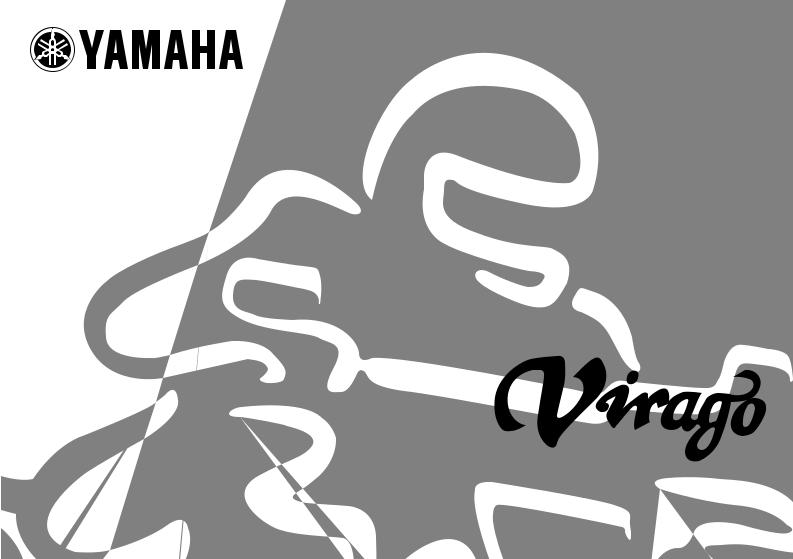
OWNER’S MANUAL
XV250P
XV250PC
|
LIT-11626-15-02 |
2UJ-28199-1A |
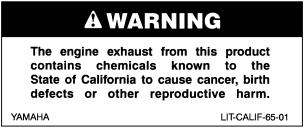
EAU03438
Congratulations on your purchase of the Yamaha XV250/XV250C. This model is the result of Yamaha’s vast experience in the production of fine sporting, touring, and pacesetting racing machines. It represents the high degree of craftsmanship and reliability that have made Yamaha a leader in these fields.
This manual will give you an understanding of the operation, inspection, and basic maintenance of this motorcycle. If you have any questions concerning the operation or maintenance of your motorcycle, please consult a Yamaha dealer.
The design and manufacture of this Yamaha motorcycle fully comply with the emissions standards for clean air applicable at the date of manufacture. Yamaha has met these standards without reducing the performance or economy of operation of the motorcycle. To maintain these high standards, it is important that you and your Yamaha dealer pay close attention to the recommended maintenance schedules and operating instructions contained within this manual.

IMPORTANT MANUAL INFORMATION |
EAU00003 |
Particularly important information is distinguished in this manual by the following notations:
The Safety Alert Symbol means ATTENTION! BECOME ALERT! YOUR SAFETY IS
INVOLVED!
|
WARNING |
Failure to follow WARNING instructions could result in severe injury or death to the |
|
|
motorcycle operator, a bystander or a person inspecting or repairing the motorcycle. |
||
|
CAUTION: |
A CAUTION indicates special precautions that must be taken to avoid damage to the |
|
|
motorcycle. |
||
NOTE: A NOTE provides key information to make procedures easier or clearer.
NOTE:
●This manual should be considered a permanent part of this motorcycle and should remain with it even if the motorcycle is subsequently sold.
●Yamaha continually seeks advancements in product design and quality. Therefore, while this manual contains the most current product information available at the time of printing, there may be minor discrepancies between your motorcycle and this manual. If you have any questions concerning this manual, please consult your Yamaha dealer.

IMPORTANT MANUAL INFORMATION
EW000000

PLEASE READ THIS MANUAL AND THE “YOU AND YOUR MOTORCYCLE: RIDING TIPS” BOOKLET CAREFULLY AND COMPLETELY BEFORE OPERATING THIS MOTORCYCLE. DO NOT ATTEMPT TO OPERATE THIS MOTORCYCLE UNTIL YOU HAVE ATTAINED ADEQUATE KNOWLEDGE OF ITS CONTROLS AND OPERATING FEATURES AND UNTIL YOU HAVE BEEN TRAINED IN SAFE AND PROPER RIDING TECHNIQUES. REGULAR INSPECTIONS AND CAREFUL MAINTENANCE, ALONG WITH GOOD RIDING SKILLS, WILL ENSURE THAT YOU SAFELY ENJOY THE CAPABILITIES AND THE RELIABILITY OF THIS MOTORCYCLE.
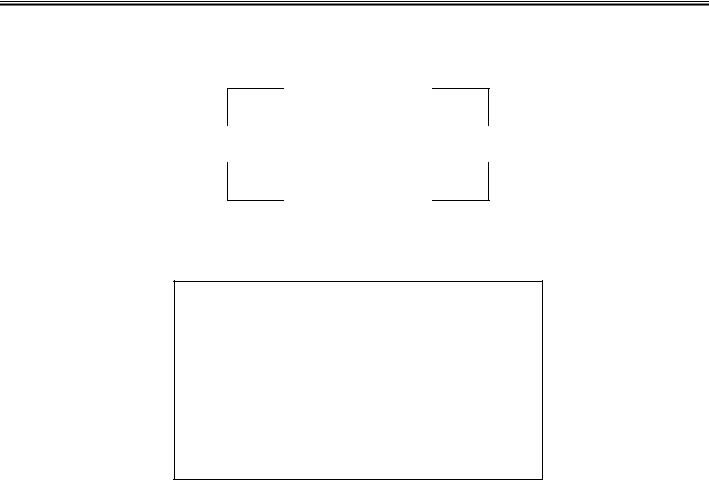
IMPORTANT MANUAL INFORMATION
AFFIX DEALER
LABEL HERE
EAU03336
XV250P/XV250PC
OWNER’S MANUAL
© 2001 by Yamaha Motor Corporation, U.S.A. 1st Edition, March 2001
All rights reserved.
Any reprinting or unauthorized use without the written permission of Yamaha Motor Corporation, U.S.A. is expressly prohibited.
Printed in Japan.
P/N LIT-11626-15-02
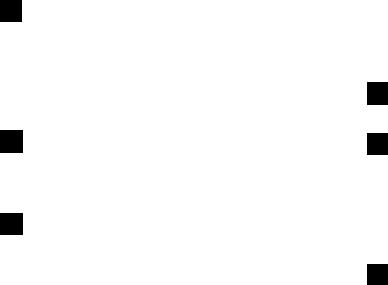
|
EAU00009 |
TABLE OF CONTENTS |
|
1 |
SAFETY INFORMATION ……………………………… |
1-1 |
|
|
Safe riding |
1-1 |
||
|
Protective apparel ………………………………………. |
1-3 |
||
|
Modifications ……………………………………………… |
1-3 |
||
|
Loading and accessories …………………………….. |
1-3 |
||
|
Gasoline and exhaust gas……………………………. |
1-5 |
||
|
Location of important labels ………………………… |
1-7 |
||
|
2 |
DESCRIPTION …………………………………………… |
2-1 |
|
|
Left view |
2-1 |
||
|
Right view …………………………………………………. |
2-2 |
||
|
Controls and instruments ……………………………. |
2-3 |
||
|
3 |
INSTRUMENT AND CONTROL FUNCTIONS … |
3-1 |
|
|
Main switch |
3-1 |
||
|
Indicator lights …………………………………………… |
3-1 |
||
|
Speedometer unit ………………………………………. |
3-2 |
||
|
Handlebar switches ……………………………………. |
3-2 |
||
|
Clutch lever ………………………………………………. |
3-3 |
||
|
Shift pedal ………………………………………………… |
3-3 |
||
|
Brake lever ……………………………………………….. |
3-4 |
||
|
Brake pedal ………………………………………………. |
3-4 |
||
|
Fuel tank cap …………………………………………….. |
3-4 |
||
|
Fuel …………………………………………………………. |
3-5 |
||
|
Fuel cock ………………………………………………….. |
3-6 |
||
|
Starter (choke) lever …………………………………… |
3-7 |
||
|
Steering lock …………………………………………….. |
3-8 |
||
|
Rider seat …………………………………………………. |
3-8 |
|
Helmet holder ……………………………………………. |
3-9 |
|
Adjusting the shock absorber assemblies ……. |
3-10 |
|
Sidestand ……………………………………………….. |
3-10 |
|
Ignition circuit cut-off system ……………………… |
3-11 |
|
4 |
PRE-OPERATION CHECKS …………………………. |
4-1 |
|
|
Pre-operation check list |
4-1 |
||
|
5 |
OPERATION AND IMPORTANT RIDING |
||
|
POINTS |
5-1 |
||
|
Starting and warming up a cold engine …………. |
5-2 |
||
|
Starting a warm engine ………………………………. |
5-3 |
||
|
Shifting …………………………………………………….. |
5-4 |
||
|
Engine break-in …………………………………………. |
5-5 |
||
|
Parking …………………………………………………….. |
5-6 |
||
|
6 |
PERIODIC MAINTENANCE AND MINOR |
||
|
REPAIR |
6-1 |
||
|
PERIODIC MAINTENANCE ………………………… |
6-1 |
||
|
Owner’s tool kit ………………………………………….. |
6-2 |
||
|
Periodic maintenance chart for the emission |
|||
|
control system ……………………………………….. |
6-3 |
||
|
General maintenance and lubrication chart …… |
6-4 |
||
|
Checking the spark plugs ……………………………. |
6-6 |
||
|
Canister (for California only) ……………………….. |
6-8 |
||
|
Engine oil and oil filter element ……………………. |
6-8 |
||
|
Cleaning the air filter element ……………………. |
6-11 |
||
|
Adjusting the carburetor ……………………………. |
6-13 |
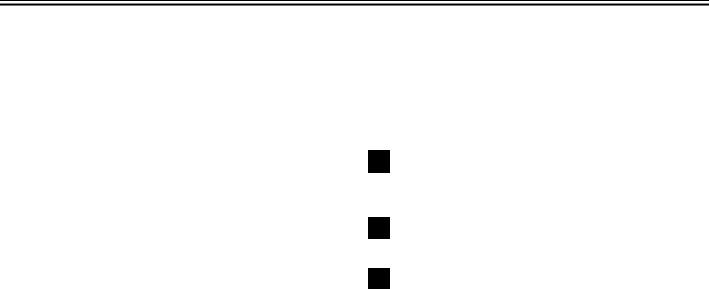
TABLE OF CONTENTS
|
Adjusting the throttle cable free play …………… |
6-13 |
|
Adjusting the valve clearance ……………………. |
6-14 |
|
Tires ………………………………………………………. |
6-14 |
|
Spoke wheels ………………………………………….. |
6-16 |
|
Accessories and replacement parts ……………. |
6-16 |
|
Adjusting the clutch lever free play …………….. |
6-17 |
|
Adjusting the brake lever free play ……………… |
6-18 |
|
Adjusting the brake pedal position and free |
|
|
play …………………………………………………….. |
6-18 |
|
Adjusting the rear brake light switch …………… |
6-20 |
|
Checking the front brake pads and rear brake |
|
|
shoes ………………………………………………….. |
6-20 |
|
Checking the brake fluid level ……………………. |
6-21 |
|
Changing the brake fluid …………………………… |
6-22 |
|
Drive chain slack ……………………………………… |
6-22 |
|
Lubricating the drive chain ………………………… |
6-25 |
|
Checking and lubricating the cables …………… |
6-25 |
|
Checking and lubricating the throttle |
|
|
grip and cable ………………………………………. |
6-26 |
|
Checking and lubricating the brake and shift |
|
|
pedals …………………………………………………. |
6-26 |
|
Checking and lubricating the brake and clutch |
|
|
levers ………………………………………………….. |
6-27 |
|
Checking and lubricating the sidestand ………. |
6-27 |
|
Checking the front fork ……………………………… |
6-28 |
|
Checking the steering ………………………………. |
6-28 |
|
Checking the wheel bearings …………………….. |
6-29 |
|
Battery ……………………………………………………. |
6-30 |
|
Replacing the fuses …………………………………. |
6-32 |
|
Replacing the headlight bulb ……………………… |
6-32 |
|
Supporting the motorcycle ………………………… |
6-34 |
|
Front wheel …………………………………………….. |
6-34 |
|
Rear wheel ……………………………………………… |
6-36 |
|
Troubleshooting ………………………………………. |
6-38 |
|
Troubleshooting chart ………………………………. |
6-39 |
|
7 |
MOTORCYCLE CARE AND STORAGE …………. |
7-1 |
|
|
Care |
7-1 |
||
|
Storage ……………………………………………………. |
7-4 |
||
|
8 |
SPECIFICATIONS……………………………………….. |
8-1 |
|
|
Specifications |
8-1 |
||
|
9 |
CONSUMER INFORMATION………………………… |
9-1 |
|
|
Identification numbers |
9-1 |
||
|
Key identification number ……………………………. |
9-1 |
||
|
Vehicle identification number ………………………. |
9-1 |
||
|
Model label ……………………………………………….. |
9-2 |
||
|
Reporting safety defects …………………………….. |
9-3 |
||
|
Motorcycle noise regulation ………………………… |
9-4 |
||
|
Maintenance record …………………………………… |
9-5 |
||
|
Street and enduro motorcycle limited |
|||
|
warranty…………………………………………………. |
9-7 |
||
|
Yamaha extended service (Y.E.S.) ………………. |
9-9 |

SAFETY INFORMATION |
EAU03633 |
|
|
MOTORCYCLES ARE SINGLE TRACK VEHICLES. THEIR SAFE USE AND OPERATION ARE DE- |
||
|
PENDENT UPON THE USE OF PROPER RIDING TECHNIQUES AS WELL AS THE EXPERTISE OF |
||
|
1 |
THE OPERATOR. EVERY OPERATOR SHOULD KNOW THE FOLLOWING REQUIREMENTS BE- |
|
|
FORE RIDING THIS MOTORCYCLE. |
HE OR SHE SHOULD:
1.OBTAIN THOROUGH INSTRUCTIONS FROM A COMPETENT SOURCE ON ALL ASPECTS OF MOTORCYCLE OPERATION.
2.OBSERVE THE WARNINGS AND MAINTENANCE REQUIREMENTS IN THE OWNER’S MANUAL.
3.OBTAIN QUALIFIED TRAINING IN SAFE AND PROPER RIDING TECHNIQUES.
4.OBTAIN PROFESSIONAL TECHNICAL SERVICE AS INDICATED BY THE OWNER’S MANUAL AND/OR WHEN MADE NECESSARY BY MECHANICAL CONDITIONS.
Safe riding
1.Always make pre-operation checks. Careful checks may help prevent an accident.
2.This motorcycle is designed to carry the operator and a passenger.
3.The failure of motorists to detect and recognize motorcycles in traffic is the predominating cause of automobile/motorcycle accidents. Many accidents have been caused by an automobile driver who did not see the motorcycle. Making yourself conspicuous appears to be very effective in reducing the
chance of this type of accident. Therefore:
a.Wear a brightly colored jacket.
b.Use extra caution when approaching and passing through intersections, since intersections are the most likely places for motorcycle accidents to occur.
c.Ride where other motorists can see you. Avoid riding in another motorist’s blind spot.
1-1


4.Many motorcycle accidents involve inexperienced operators. In fact, many operators who have been involved in accidents do not even have a current motorcycle license.
a. Make sure that you are qualified and that you only lend your motorcycle to other qualified opera-
b.Know your skills and limits. Staying within your limits may help you to avoid an accident.
c.We recommend that you practice riding your motorcycle where there is no traffic until you have become thoroughly familiar with the motorcycle and all of its controls.
5.Many motorcycle accidents have been caused by error of the motorcycle operator. A typical error made by the operator is veering wide on a turn due to EXCESSIVE SPEED or undercornering (insufficient lean angle for the speed).
a.Always obey the speed limit and never travel faster than warranted by road and traffic conditions.
b.Always signal before turning or changing lanes. Make sure that other motorists can see you.
6.The posture of the operator and passenger is important for proper control.
a.The operator should keep both hands on the handlebar and both feet on the operator footrests during operation to maintain control of the motorcycle.
b.The passenger should always hold onto the operator, seat strap, or grab bar, if equipped, with both hands and keep both feet on the passenger footrests.
c.Never carry a passenger unless he or she can firmly place both feet on the passenger footrests.
7.Never ride under the influence of alcohol or other drugs.
8.This motorcycle is designed for on-road use only, therefore, it is not suitable for off-road use.
1-2

|
SAFETY INFORMATION |
|
|
Protective apparel |
|
|
The majority of fatalities from motorcycle accidents are the result of head injuries. The use of a safety |
|
|
1 |
helmet is the single most critical factor in the prevention or reduction of head injuries. |
1.Always wear an approved helmet.
2.Wear a face shield or goggles. Wind in your unprotected eyes could contribute to an impairment of vision which could delay seeing a hazard.
3.The use of a jacket, heavy boots, trousers, gloves, etc., is effective in preventing or reducing abrasions or lacerations.
4.Never wear loose-fitting clothes, otherwise they could catch on the control levers, footrests, or wheels and cause injury or an accident.
5.Never touch the engine or exhaust system during or after operation. They become very hot and can cause burns. Always wear protective clothing that covers your legs, ankles, and feet.
6.Passengers should also observe the precautions mentioned above.
Modifications
Modifications made to this motorcycle not approved by Yamaha, or the removal of original equipment, may render the motorcycle unsafe for use and may cause severe personal injury. Modifications may also make your motorcycle illegal to use.
Loading and accessories
Adding accessories or cargo to your motorcycle can adversely affect stability and handling if the weight distribution of the motorcycle is changed. To avoid the possibility of an accident, use extreme caution when adding cargo or accessories to your motorcycle. Use extra care when riding a motorcycle that has added cargo or accessories. Here are some general guidelines to follow if loading cargo or adding accessories to your motorcycle:
1-3


Loading
The total weight of the operator, passenger, accessories and cargo must not exceed the maximum load limit of XV250: 432 lb (196 kg) / XV250C: 430 lb (195 kg). When loading within this weight limit, keep the 1 following in mind:
1.Cargo and accessory weight should be kept as low and close to the motorcycle as possible. Make sure to distribute the weight as evenly as possible on both sides of the motorcycle to minimize imbalance or instability.
2.Shifting weights can create a sudden imbalance. Make sure that accessories and cargo are securely attached to the motorcycle before riding. Check accessory mounts and cargo restraints frequently.
3.Never attach any large or heavy items to the handlebar, front fork, or front fender. These items, including such cargo as sleeping bags, duffel bags, or tents, can create unstable handling or slow steering response.
Accessories
Genuine Yamaha accessories have been specifically designed for use on this motorcycle. Since Yamaha cannot test all other accessories that may be available, you must personally be responsible for the proper selection, installation and use of non-Yamaha accessories. Use extreme caution when selecting and installing any accessories.
Keep the following guidelines in mind, as well as those provided under “Loading” when mounting accessories.
1.Never install accessories or carry cargo that would impair the performance of your motorcycle. Carefully inspect the accessory before using it to make sure that it does not in any way reduce ground clearance or cornering clearance, limit suspension travel, steering travel or control operation, or obscure lights or reflectors.
1-4


a.Accessories fitted to the handlebar or the front fork area can create instability due to improper weight distribution or aerodynamic changes. If accessories are added to the handlebar or front
fork area, they must be as lightweight as possible and should be kept to a minimum.
1 b. Bulky or large accessories may seriously affect the stability of the motorcycle due to aerodynamic effects. Wind may attempt to lift the motorcycle, or the motorcycle may become unstable in cross winds. These accessories may also cause instability when passing or being passed by large vehicles.
c.Certain accessories can displace the operator from his or her normal riding position. This improper position limits the freedom of movement of the operator and may limit control ability, therefore, such accessories are not recommended.
2.Use caution when adding electrical accessories. If electrical accessories exceed the capacity of the motorcycle’s electrical system, an electric failure could result, which could cause a dangerous loss of lights or engine power.
Gasoline and exhaust gas
1.GASOLINE IS HIGHLY FLAMMABLE:
a.Always turn the engine off when refueling.
b.Take care not to spill any gasoline on the engine or exhaust system when refueling.
c.Never refuel while smoking or in the vicinity of an open flame.
2.Never start the engine or let it run for any length of time in a closed area. The exhaust fumes are poisonous and may cause loss of consciousness and death within a short time. Always operate your motorcycle in an area that has adequate ventilation.
3.Always turn the engine off before leaving the motorcycle unattended and remove the key from the main switch. When parking the motorcycle, note the following:
1-5


a.The engine and exhaust system may be hot, therefore, park the motorcycle in a place where pedestrians or children are not likely to touch these hot areas.
b.Do not park the motorcycle on a slope or soft ground, otherwise it may fall over.
c. Do not park the motorcycle near a flammable source (e.g. a kerosene heater, or near an open 1 flame), otherwise it could catch fire.
4.When transporting the motorcycle in another vehicle, make sure that it is kept upright and that the fuel cock is turned to “ON” or “RES” (for vacuum type) / “OFF” (for manual type). If it should lean over, gasoline may leak out of the carburetor or fuel tank.
5.If you should swallow any gasoline, inhale a lot of gasoline vapor, or allow gasoline to get into your eyes, see your doctor immediately. If any gasoline spills on your skin or clothing, immediately wash the affected area with soap and water and change your clothes.
1-6
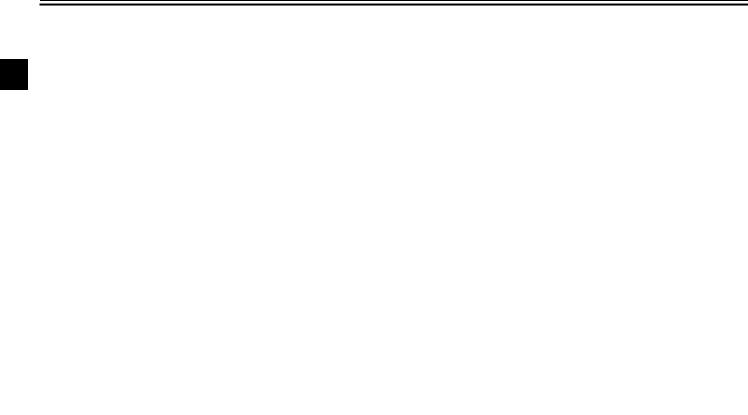

EAU02977
Location of important labels
Please read the following important labels carefully before operating this motorcycle.
1
1-7
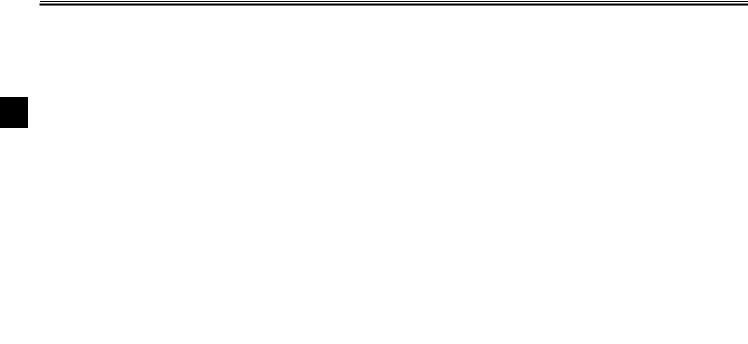
Left view
2
|
1. Headlight |
(page 6-32) |
6. Shock absorber assembly spring |
|
|
2. Fuel tank |
(page 3-5) |
preload adjusting ring |
(page 3-10) |
|
3. Battery |
(page 6-30) |
7. Main switch |
(page 3-1) |
|
4. Fuses |
(page 6-32) |
8. Fuel cock |
(page 3-6) |
|
5. Helmet holder |
(page 3-9) |
9. Shift pedal |
(page 3-3) |
2-1

DESCRIPTION
Right view
2
|
10. Tail/brake light |
14. Front turn signal/position light |
||
|
11. Rear turn signal light |
15. Brake pedal |
(page 3-4) |
|
|
12. Rider seat |
(page 3-8) |
16. Footrest |
|
|
13. Air filter element |
(page 6-11) |
17. Shock absorber assembly spring |
|
|
preload adjusting ring |
(page 3-10) |
2-2
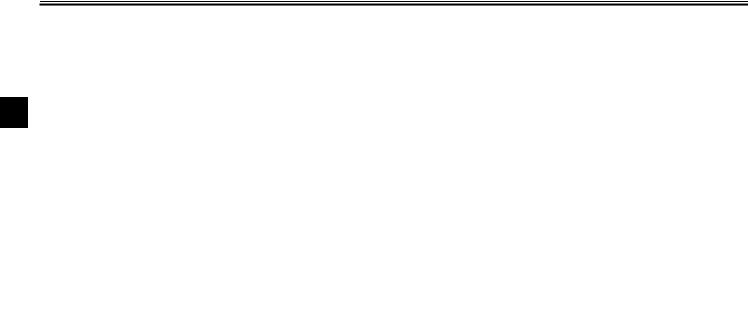
DESCRIPTION
Controls and instruments
2
|
1. Clutch lever |
(page 3-3) |
5. Right handlebar switches |
(page 3-3) |
|
2. Left handlebar switches |
(page 3-2) |
6. Brake lever |
(page 3-4) |
|
3. Speedometer unit |
(page 3-2) |
7. Throttle grip |
(page 6-13) |
|
4. Indicator lights |
(page 3-1) |
8. Fuel tank cap |
(page 3-4) |
2-3

|
EAU00027 |
INSTRUMENT AND CONTROL FUNCTIONS |
EAU00050
P (Parking)
The taillight and position lights are on, but all other electrical systems are off. The key can be removed.
The key must be pushed in from the “OFF” position to be turned to “P”.
Main switch
ECA00043
CAUTION:
Do not use the parking position for EAU00028 an extended length of time, other-
wise the battery may discharge.
3
1.High beam indicator light “HIGH BEAM”
2.Neutral indicator light “NEUTRAL”
3.Turn signal indicator light “TURN”
The main switch controls the ignition and lighting systems. The various main switch positions are described below.
EAU00032
ON
All electrical systems are supplied with power, the headlight, meter lighting, taillight and front position lights come on, and the engine can be started. The key cannot be removed.
EAU00056
Indicator lights
EAU00064
High beam indicator light “HIGH BEAM”
This indicator light comes on when the high beam of the headlight is switched on.
EAU00062
Neutral indicator light “NEUTRAL”
This indicator light comes on when the transmission is in the neutral position.
EAU00059
EAU00038
OFF
All electrical systems are off. The key can be removed.
Turn signal indicator light “TURN”
This indicator light flashes when the turn signal switch is pushed to the left or right.
3-1

INSTRUMENT AND CONTROL FUNCTIONS
3
1.Odometer
2.Tripmeter
3.Reset knob
4.Speedometer
EAU00095
Speedometer unit
The speedometer unit is equipped with a speedometer, an odometer and a tripmeter. The speedometer shows riding speed. The odometer shows the total distance traveled. The tripmeter shows the distance traveled since it was last set to zero with the reset knob. The tripmeter can be used to estimate the distance that can be traveled with a full tank of fuel. This information will enable you to plan future fuel stops.
1.Dimmer switch “LIGHTS”
2.Turn signal switch “TURN”
3.Horn switch “HORN”
EAU00118
Handlebar switches
EAU00122
Dimmer switch “LIGHTS”
Set the switch to “HI” for the high beam and to “LO” for the low beam.
EAU00125
Turn signal switch “TURN”
To signal a right-hand turn, push this switch to the right. To signal a left-hand turn, push this switch to the left. When released, the switch returns to the cen-
ter position. To cancel the turn signal lights, push the switch in after it has returned to the center position.
EAU00130
Horn switch “HORN”
Press this switch to sound the horn.
3-2

INSTRUMENT AND CONTROL FUNCTIONS
1.Engine stop switch “ENGINE STOP”
2.Start switch “START”
EAU00137
Engine stop switch “ENGINE STOP”
Set this switch to “OFF” to stop the engine in case of an emergency, such as when the motorcycle overturns or when the throttle cable is stuck.
EAU00141
Start switch “START”
Push this switch to crank the engine with the starter.
EC000005
CAUTION:
See page 5-2 for starting instructions prior to starting the engine.
1. Clutch lever
EAU00152
Clutch lever
The clutch lever is located at the left handlebar grip. To disengage the clutch, pull the lever toward the handlebar grip. To engage the clutch, release the lever. The lever should be pulled rapidly and released slowly for smooth clutch operation.
The clutch lever is equipped with a clutch switch, which is part of the ignition circuit cut-off system. (See page 3-11 for an explanation of the ignition circuit cut-off system.)
3
1. Shift pedal
EAU00157
Shift pedal
The shift pedal is located on the left side of the engine and is used in combination with the clutch lever when shifting the gears of the 5-speed con- stant-mesh transmission equipped on this motorcycle.
3-3

INSTRUMENT AND CONTROL FUNCTIONS
3
1. Brake lever
EAU00158
Brake lever
The brake lever is located at the right handlebar grip. To apply the front brake, pull the lever toward the handlebar grip.
1. Brake pedal
EAU00162
Brake pedal
The brake pedal is on the right side of the motorcycle. To apply the rear brake, press down on the brake pedal.
1.Fuel tank cap
2.Unlock.
EAU03756
Fuel tank cap
To remove the fuel tank cap
Insert the key into the lock and turn it 1/4 turn clockwise. The lock will be released and the fuel tank cap can be removed.
To install the fuel tank cap
1.Push the fuel tank cap into position with the key inserted in the lock.
2.Turn the key counterclockwise to the original position, and then remove it.
3-4
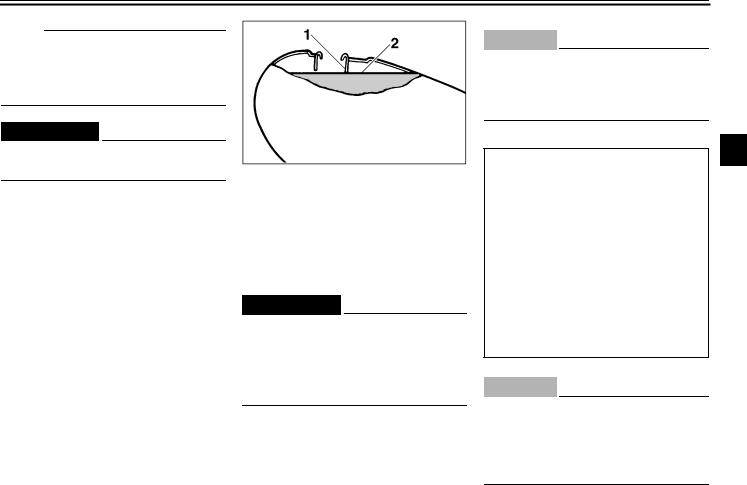
INSTRUMENT AND CONTROL FUNCTIONS
NOTE:
The fuel tank cap cannot be installed unless the key is in the lock. In addition, the key cannot be removed if the cap is not properly installed and locked.
EWA00032

Make sure that the fuel tank cap is properly installed before riding.
1.Fuel tank filler tube
2.Fuel level
EAU03753
Fuel
Make sure that there is sufficient fuel in the tank. Fill the fuel tank to the bottom of the filler tube as shown.
EW000130

●Do not overfill the fuel tank, otherwise it may overflow when the fuel warms up and expands.
●Avoid spilling fuel on the hot engine.
EAU00185
CAUTION:
@
Immediately wipe off spilled fuel with a clean, dry, soft cloth, since fuel may deteriorate painted surfaces or plastic parts.
@
EAU04194
3
Recommended fuel: UNLEADED FUEL ONLY
Fuel tank capacity: Total amount:
XV250 9.5 L
(2.1 Imp gal, 2.5 US gal) XV250C
9.2 L
(2.0 lmp gal, 2.4 US gal) Reserve amount:
2.6 L (0.6 Imp gal, 0.7 US gal)
ECA00102
CAUTION:
_
Use only unleaded gasoline. The use of leaded gasoline will cause severe damage to the engine internal parts such as valves, piston rings, exhaust system, etc.

INSTRUMENT AND CONTROL FUNCTIONS
Your Yamaha engine has been designed to use regular unleaded gasoline with a pump octane number [(R+M)/2] of 86 or higher, or a research octane number of 91 or higher. If knocking (or pinging) occurs, use a gasoline of a different brand or premi-
3um unleaded fuel. Use of unleaded fuel will extend spark plug life and reduce maintenance costs.
Gasohol
There are two types of gasohol: gasohol containing ethanol and that containing methanol. Gasohol containing ethanol can be used if the ethanol content does not exceed 10%. Gasohol containing methanol is not recommended by Yamaha because it can cause damage to the fuel system or vehicle performance problems.
ON: normal position
1. Arrow mark positioned over “ON”
EAU03236
Fuel cock
This motorcycle is equipped with a negative pressure fuel cock. The fuel cock supplies fuel from the tank to the carburetors while also filtering it.
The fuel cock lever positions are explained as follows and shown in the illustrations.
ON
With the fuel cock lever in this position, fuel flows to the carburetor when the engine is running. Turn the fuel cock lever to this position when starting the engine and riding.
RES: reserve position
1. Arrow mark positioned over “RES”
RES
This indicates reserve. With the fuel cock lever in this position, the fuel reserve is made available. Quickly turn the fuel cock lever to this position if you run out of fuel while riding, otherwise the engine may stall and will have to be primed (see “PRI”). After turning the fuel cock lever to “RES”, refuel as soon as possible and be sure to turn the fuel cock lever back to “ON”!
3-6

INSTRUMENT AND CONTROL FUNCTIONS
PRI: priming position
1. Arrow mark positioned over “PRI”
PRI
This indicates prime. With the fuel cock lever in this position, the engine can be “primed”. Turn the fuel cock lever to this position when the engine has been allowed to run out of fuel. This sends fuel directly to the carburetor, which will make starting easier. After the engine has started, be sure to turn the lever to “ON” (or “RES” if you have not refueled yet).
3
1. Starter (choke) lever
EAU00211
Starter (choke) lever
Starting a cold engine requires a richer air-fuel mixture, which is supplied by the starter (choke).
Move the lever in direction a to turn on the starter (choke).
Move the lever in direction b to turn off the starter (choke).
3-7

INSTRUMENT AND CONTROL FUNCTIONS
To unlock the steering
1.Open the steering lock cover, and then insert the key.
2.Push the key in, turn it 1/8 turn counterclockwise so that it moves out, and then release it.
3.Remove the key, and then close the lock cover.
1. Bolt (× 2)
|
EAU02934 |
EAU01072 |
|
|
Steering lock |
Rider seat |
|
|
To lock the steering |
To remove the rider seat |
|
|
1. |
Turn the handlebar all the way to |
Remove the bolts, and then pull the rid- |
|
right. |
er seat off. |
|
|
2. |
Open the steering lock cover, and |
|
|
then insert the key. |
||
|
3. |
Turn the key 1/8 turn counter- |
|
|
clockwise, push it in while turning |
||
|
the handlebar slightly to the left, |
||
|
and then turn the key 1/8 turn |
||
|
clockwise. |
||
|
4. |
Check that the steering is locked, |
|
|
remove the key, and then close |
||
|
the lock cover. |
3-8

INSTRUMENT AND CONTROL FUNCTIONS
1.Projection
2.Seat holder
To install the rider seat
1.Insert the projection on the front of the rider seat into the seat holder as shown.
2.Place the rider seat in the original position, and then tighten the bolts.
NOTE:
Make sure that the rider seat is properly secured before riding.
3
1.Helmet holder
2.Unlock.
EAU00260
Helmet holder
To open the helmet holder, insert the key into the lock, and then turn the key as shown.
To lock the helmet holder, place it in the original position, and then remove the key.
EW000030

Never ride with a helmet attached to the helmet holder, since the helmet may hit objects, causing loss of control and possibly an accident.
3-9
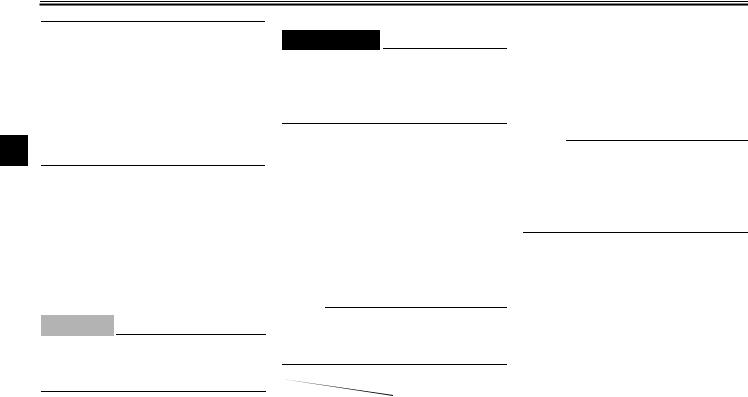
INSTRUMENT AND CONTROL FUNCTIONS
3
1.Spring preload adjusting ring
2.Position indicator
EAU00300
Adjusting the shock absorber assemblies
Each shock absorber assembly is equipped with a spring preload adjusting ring.
EC000015
CAUTION:
Never attempt to turn an adjusting mechanism beyond the maximum or minimum settings.
EW000040

Always adjust both shock absorber assemblies equally, otherwise poor handling and loss of stability may result.
Adjust the spring preload as follows. To increase the spring preload and thereby harden the suspension, turn the adjusting ring on each shock absorber assembly in direction a. To decrease the spring preload and thereby soften the suspension, turn the adjusting ring on each shock absorber assembly in direction b.
NOTE:
Align the appropriate notch in the adjusting ring with the position indicator on the shock absorber.
|
Setting |
|
|
Minimum (soft) |
1 |
|
Standard |
2 |
|
Maximum (hard) |
5 |
EAU00330
Sidestand
The sidestand is located on the left side of the frame. Raise the sidestand or lower it with your foot while holding the motorcycle upright.
NOTE:
@
The built-in sidestand switch is part of the ignition circuit cut-off system, which cuts the ignition in certain situations. (See further down for an explanation of the ignition circuit cut-off system.)
@
3-10
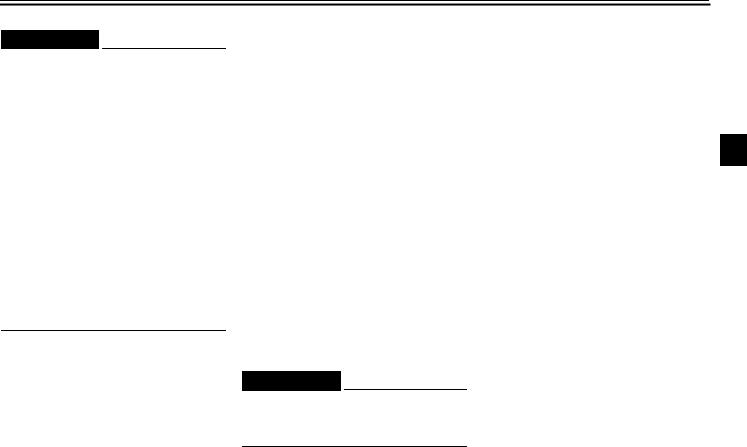
INSTRUMENT AND CONTROL FUNCTIONS
EW000044

The motorcycle must not be ridden with the sidestand down, or if the sidestand cannot be properly moved up (or does not stay up), otherwise the sidestand could contact the ground and distract the operator, resulting in a possible loss of control. Yamaha’s ignition circuit cut-off system has been designed to assist the operator in fulfilling the responsibility of raising the sidestand before starting off. Therefore, check this system regularly as described below and have a Yamaha dealer repair it if it does not function properly.
EAU03720
Ignition circuit cut-off system
The ignition circuit cut-off system (comprising the sidestand switch, clutch switch and neutral switch) has the following functions.
● It prevents starting when the trans-
mission is in gear and the side-
3
stand is up, but the clutch lever is not pulled.
●It prevents starting when the transmission is in gear and the clutch lever is pulled, but the sidestand is still down.
●It cuts the running engine when
the transmission is in gear and the sidestand is moved down.
Periodically check the operation of the ignition circuit cut-off system according to the following procedure.
EW000045

If a malfunction is noted, have a Yamaha dealer check the system before riding.
3-11

File Specifications:137/137397-xv250p.pdf file (14 Apr 2023) |
Accompanying Data:
Yamaha VIRAGO XV250P Motorcycle PDF Owner’s Manual (Updated: Friday 14th of April 2023 12:57:45 PM)
Rating: 4.3 (rated by 12 users)
Compatible devices: FZR600RA, FJR13AEY, FJR1300N 2001, Star XVS13CAC, TRX850H, 2011 WR250X, FZ6RA, XV17ATMV(C) Road Star.
Recommended Documentation:
Owner’s Manual (Text Version):
(Ocr-Read Summary of Contents of some pages of the Yamaha VIRAGO XV250P Document (Main Content), UPD: 14 April 2023)
-
81, 7-39 D:\Yuki-Data\Yuki_YMC\HM02L006_XV250P-E2\English\E-7.fm R Check the fuel level in the fuel tank. 1. Fuel There is enough fuel. There is no fuel. Check the compression. Supply fuel. Operate the electric starter. 2. Compression There is compression. There is no compression. Check the ignition. Have a Yamaha dealer check the vehicle. Remove the spark plugs and check the electrodes. 3. Ignition Wet Dry…
-
58, Yamaha VIRAGO XV250P 7-16 D:\Yuki-Data\Yuki_YMC\HM02L006_XV250P-E2\English\E-7.fm L 1. Locknut 2. Adjusting bolt 3. Free play EUU81500 WARNING ● Check the brake lever free play. Be sure the brake is working properly. ● A soft or spongy feeling in the brake lever can indicate the presence of air in the brake system. This air must be removed by bleeding the brake sys- tem before the motorcycle is operat- ed. Air in the system will cause greatly diminished braking capability and can …
-
59, 7-17 D:\Yuki-Data\Yuki_YMC\HM02L006_XV250P-E2\English\E-7.fm R 1. Footrest 2. Pedal height 3. Free play 1. Locknut 2. Adjuster (for pedal height) EUU64400 WARNING After adjusting the pedal height adjust brake pedal free play. 2. Free play The rear brake pedal free play should be adjusted to 20 ~ 30 mm at the brake ped- al end. Turn the adjuster on the brake rod clockwise to reduce free play or counter- clockwise to increase free play. 1. Adjuster (for free …
-
39, 6-3 D:\Yuki-Data\Yuki_YMC\HM02L006_XV250P-E2\English\E-6.fm R EAF10802 Starting a warm engine The starter “CHOKE” is not required when the engine is warm. EUU31401 CAUTION: See the “Engine break-in” section prior to operating the motorcycle for the first time. EAF20003 Shifting The transmission lets you control the amount of power you have available at a given speed for starting, accelerating, climbing hills, etc…
-
33, 5-8 D:\Yuki-Data\Yuki_YMC\HM02L006_XV250P-E2\English\E-5.fm R 1. Tread depth 2. Side wall 3. Wear indicator COPY CE-10ECE-10E COPY CE-16ECE-16E EUU12600 N O TE: These limits may be different by regulation from country to country. If so, conform to the limits specified by the regulations of your own country. EUU68402 WARNING 1. It is dangerous to ride with a worn-out tire. When a tire tread begins to show lines, have a Yamaha dealer replace the tire immediate…
-
48, 7-6 D:\Yuki-Data\Yuki_YMC\HM02L006_XV250P-E2\English\E-7.fm L EAH44705 Engine oil 1. Oil level inspection a. Place the motorcycle on a level place and hold it in an upright position. Warm up the engine for several minutes. EUU03901 N O TE: Be sure the motorcycle is positioned straight up when checking the oil level. A slight tilt to- ward the side can result in false readings. b. With the engine stopped, check the oil level through the leve…
-
52, Yamaha VIRAGO XV250P 7-10 D:\Yuki-Data\Yuki_YMC\HM02L006_XV250P-E2\English\E-7.fm L 1. Bolt (× 2) 3. Remove the hoses and the air filter case. 1. Hose (× 2) 4. Remove the air filter case cover. 1. Screw (× 2) 5. Remove the wing bolt. 1. Wing bolt
… -
84, 8-3 D:\Yuki-Data\Yuki_YMC\HM02L006_XV250P-E2\English\E-8.fm L 7. Tie a plastic bag over the exhaust pipe outlet to prevent moisture from entering. 8. If storing in a humid or salt-air atmo- sphere, coat all exposed metal surfaces with a light film of oil. Do not apply oil to any rubber parts or the seat cover. 9. Remove the battery and charge it. Store it in a dry place and recharge it once a month. Do not store the battery in an ex- cessively warm or cold place (less than 0°C or more t…
-
26, 5-1 D:\Yuki-Data\Yuki_YMC\HM02L006_XV250P-E2\English\E-5.fm L PRE-OPERATION CHECKS Before using this motorcycle, check the following points: Item Routine Page Front brake • Check operation, free play, fluid level and fluid leakage. • Top-up with DOT4 (or DOT 3) brake fluid if necessary. 5-3 ~ 5-4, 7-15 ~ 7-21 Rear brake • Check operation, condition and free play. • Adjust if necessary. Clutch • Check operation, condition and free play. • Adjust if necessar…
-
57, Yamaha VIRAGO XV250P 7-15 D:\Yuki-Data\Yuki_YMC\HM02L006_XV250P-E2\English\E-7.fm R 1. Spark plug gap When installing the spark plug, always clean the gasket surface and use a new gasket. Wipe off any grime from the threads and tight- en the spark plug to the specified torque. EUU03802 N O TE: If a torque wrench is not available when you are installing a spark plug, a good estimate of the correct torque is 1/4 to 1/2 turn past finger tight. Have the spark plug tightened to the specif…
-
22, 4-10 D:\Yuki-Data\Yuki_YMC\HM02L006_XV250P-E2\English\E-4.fm L EAC30201 Steering lock To lock the steering, turn the handlebars all the way to the right. Open the steering lock cover, turn the key 1/8 counterclockwise then push the key in and turn it 1/8 turn clockwise. After checking to see that the steering is locked, remove the key from the lock and close the cover. To release the lock, reverse the above procedure. 1. Steering lock EAC41503 Seat To r…
-
54, 7-12 D:\Yuki-Data\Yuki_YMC\HM02L006_XV250P-E2\English\E-7.fm L EUU42400 CAUTION: The engine should never be run without the air filter element installed; excessive piston and/or cylinder wear may result. EAH93100 Carburetor adjustment The carburetors are important parts of the en- gine and requires very sophisticated adjust- ment. Most adjustments should be left to a Yamaha dealer who has the professio…
-
50, 7-8 D:\Yuki-Data\Yuki_YMC\HM02L006_XV250P-E2\English\E-7.fm L e. Reinstall the drain plug and tighten it to the specified torque. f. Install the new oil filter, new O-ring and the filter cover. Tighten the oil filter cover bolts to the specified torque. 1. Oil filter element 2. O-ring EUU04101 N O TE: Make sure the O-ring is seated properly. g. Fill up the engine with the specified amount of recommended oil. Install the oil filler cap and tighten. Tighten…
-
30, 5-5 D:\Yuki-Data\Yuki_YMC\HM02L006_XV250P-E2\English\E-5.fm L EAE40105 Engine oil Make sure the engine oil is at the specified level. Fill with oil as necessary. (See page 7-6 for details.) EUU32303 CAUTION: Do not put in any chemical additives. Also, be sure not to use oils labeled “ENERGY CONSERVING II” or higher. Engine oil also lubricates the clutch and additives could cause clutch slippage. EAE50001 Chain (See page 7-22 for details) Check the general condition of the ch…
-
Yamaha VIRAGO XV250P User Manual
-
Yamaha VIRAGO XV250P User Guide
-
Yamaha VIRAGO XV250P PDF Manual
-
Yamaha VIRAGO XV250P Owner’s Manuals
Recommended: GeForce GTX 295, EDE 5300, V20, U-verse TV
Links & Tools
Operating Impressions, Questions and Answers:
Если у вас отсутствует техническая возможность для скачивания Руководство по эксплуатации для Yamaha 2003 Virago 250
вы можете прочесть документ прямо на нашем сайте или
Скачать Yamaha 2003 Virago 250 Руководство по эксплуатации
- 1
- 2
- 3
- 4
- 5
- 6
- 7
- 8
- 9
- 10
- 11
- 12
- 13
- 14
- 15
- 16
- 17
- 18
- 19
- 20
- 21
- 22
- 23
- 24
- 25
- 26
- 27
- 28
- 29
- 30
- 31
- 32
- 33
- 34
- 35
- 36
- 37
- 38
- 39
- 40
- 41
- 42
- 43
- 44
- 45
- 46
- 47
- 48
- 49
- 50
- 51
- 52
- 53
- 54
- 55
- 56
- 57
- 58
- 59
- 60
- 61
- 62
- 63
- 64
- 65
- 66
- 67
- 68
- 69
- 70
- 71
- 72
- 73
- 74
- 75
- 76
- 77
- 78
- 79
- 80
- 81
- 82
- 83
- 84
- 85
- 86
- 87
- 88
- 89
- 90
- 91
- 92
- 93
- 94
- 95
- 96
- 97
- 98
Инструкции для прочих Yamaha Мотоциклы Star Motorcycles
Инструкции для прочих Yamaha
-
Литература о мотоциклах
- Руководство по ремонту Yamaha Virago XV250
Руководство по ремонту Yamaha Virago XV 250
На этой страничке можно скачать другие книги на мототематику
На этой странице интернет-магазина Avtoliteratura.ru мы поместили подробное Руководство по ремонту Yamaha Virago XV250. Данное руководство содержит всю необходимую сервисную информацию, которая пригодится пользователю
для регулярного технического обслуживания ремонта любой сложности мотоцикла Yamaha Virago XV250. Пособие призвано помочь всем владельцам этой модели осуществлять все необходимые процедуры, подготовить транспорт к новому сезону. Мы надеемся, что руководство найдет своего пользователя, а скачать его всегда можно по следующей ссылке
скачать книгу бесплатно








